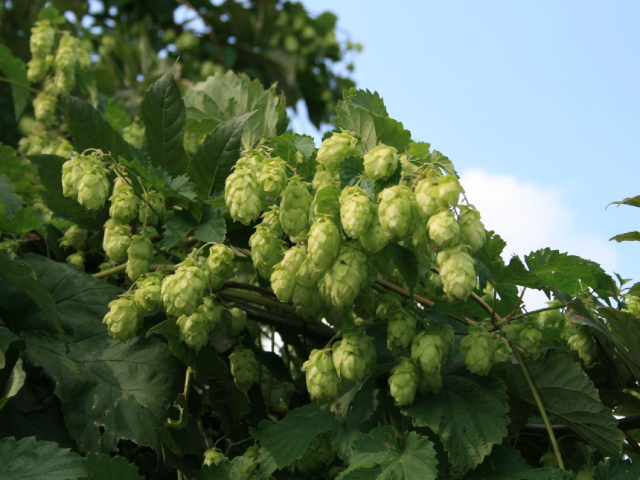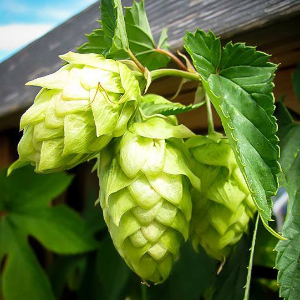Like a 40-to-one ‘dark horse’ suddenly thundering up on the outside at a major stakes race, the price and flavour of Beer is on the verge of changing – whether you like it or not. That’s because the change in climate is already changing the Hops that make Beer taste like… Well, Beer…
 Humulus lupulus: On the vine…
Humulus lupulus: On the vine…
What are Hops?
According to Wikipedia: “Hops are the flowers (also called seed cones or strobiles) of the hop plant Humulus lupulus. They are used primarily as a bittering, flavouring, and stability agent in beer, to which, in addition to bitterness, they impart floral, fruity, or citrus flavours and aromas.”
In other words, Hops are what makes Beer taste like Beer – tart, refreshing and Herby. And different Hop varieties and proprietary blends are largely what define the distinctive characters of different Beers.
Just for the record…
Carb content and yeast type are responsible for the Alcoholic strength of different Beers, and different Yeasts can have subtle effects on the overall character of your fave Brew. Though traditionally made from Barley that’s been sprouted to turn its Starches to Sugars (Carbs) that Yeast can ferment into Alcohol, Beers today – especially mass-made brands – can contain Rice, Wheat and other Grains, which can also subtly effect the flavour and character of Beer.
Hops the focus
As climate change progresses, the growing conditions of the lands on which they grow are changing and the Hop plant is particularly prone to change as a result. In an article published August 18, 2020, in the New York State (Unversity) News, Colleen Doherty, Professor of Biochemistry at New York State, falls back on ‘terroir’, a French term usually associated with Wine, to explain how and why the changes are taking place. At its simplest, ‘terroir’ is the micro climate in which the hops grow.
In a definitive 2014 article in Wine Spectator, author Harvey Steiman opines: “For me, terroir covers the sum total of a site’s constants, including soil composition, latitude, elevation, contour, sun exposure and climate (but not vintage, as that changes every year). It does not include vine training, irrigation, leaf pulling or anything else that humans might do, especially anything that happens after the grapes are picked. It’s important to separate what Mother Nature gives us from how we transform it into wine.”
So it is with Hops. With climate change, the amount of moisture, the number of sunny days, the overall amount of heat energy they’ll get and other factors will change. For instance, Doherty stresses that many of the aromatic compounds that give Hops their special flavours and aromas have developed over millennia to act as pesticides discouraging insect and fungal infestations that would otherwise devastate the Hop plants. Climate change could cause production of these compounds to drop off. Likewise, warmer overall temperatures – especially warmer nights – could allow the insect and fungal infestations to flourish. And that will mean an increase in the cost of the key ingredient in Beer.
Hops just a ‘case in point’…
Doherty points out, if we can learn, “…how warmer nights and altered pest activity change the chemical composition of Hops, [that] will help us understand the effects on other crops: the vitamins in our vegetables, the nutraceutical compounds in medicinal plants, and the overall nutritional quality of everything we grow.”
Meanwhile…
Brace for an increase of as much as 50 to 100 percent in the cost of your fave Brew over the next decade. Unless, of course, Hop growers act now to counter the effects of the otherwise inevitable changes in our climate.
~ Maggie J.

